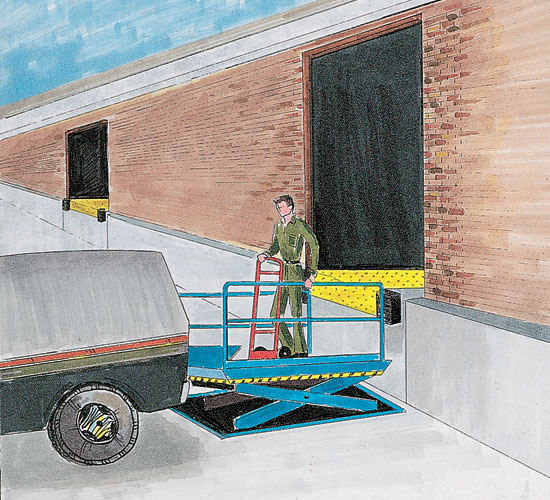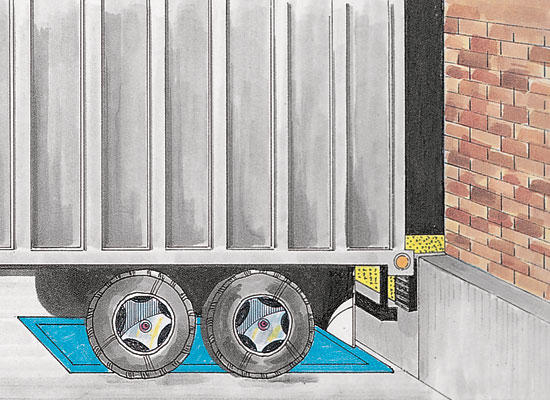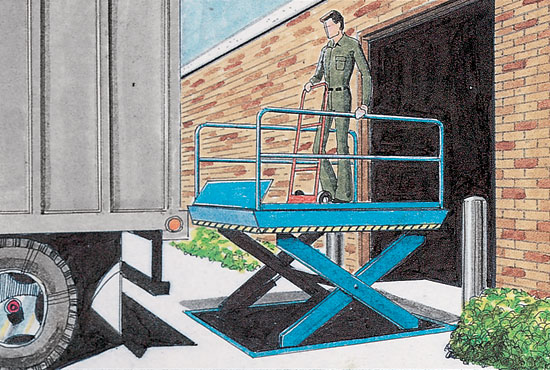Specifying a Safe Dock Lift
Dock Lift Alternatives
There are other ways of moving goods from one level to another.
Truck and dock levelers. A truck leveler installed in a pit will raise a truck to match the height of the dock. A truck leveler on the ground will do the same thing. Their drawbacks are that truck levelers have a limited range up to 36 in. and that they require a dock.
A dock leveler is mounted in a dock and is typically capable of a working range of 8 in. for a total of distance, up and down, of 16 in. But a dock leveler is unsafe at its maximum range of 16 in., which means that its useful range is a total of 8 in. (4 in. up and 4 in. down). A dock leveler installed in a 48-in. dock can therefore usefully service only a limited range of trucks.
Truck well. A truck well that effectively lowers the truck level is another option. But a truck well serves only a single truck height, will accumulate snow, water and trash, and is expensive to install.
Concrete ramp. Another solution is placing a concrete ramp between the truck and the dock or ground. This can create safety issues, especially if the ramp is steep.
Advantages of Dock Lifts
To summarize the advantages of dock lifts:
* With its typical 58 to 60-in. travel range, a dock lift can service all trucks whose bed heights vary from 21 in. to 58 in. Dock levelers or ramps cannot handle this wide range of vehicles.
* Level unloading from the bed of a truck is safer than any other loading or unloading alternative such as a concrete ramp.
* They replace expensive-to-install truck wells that hold snow, water and trash.
* They are the only type of equipment to reach from the ground level to all truck bed heights of vehicles ranging from vans and pick-ups to city delivery trucks and semi trailer trucks. Levelers have a limited vertical range.
* They guarantee that all vehicles can be accommodated at the dock.
* For retailers: A dock lift can save one or two hours of slow hand unloading. In addition to the obvious labor savings, the capital savings from better truck turnaround times can yield two to three-year paybacks on the cost of the dock lift.
* For warehouses and manufacturing buildings: Bottlenecks are compounded because everything passes over the docks twice, when they are received and when they are shipped. Although most of the traffic is concentrated in semi trailer trucks, vehicles of lower loading heights will show up often. In those cases a dock lift becomes very valuable.
* For hospitals, office buildings and institutional buildings: The widest range of delivery vehicles visit these sites. Therefore the universal service range of dock lift makes a logical choice.

Image courtesy of Advance Lifts®
A typical dock lift working range is from zero to 60 in. and can service a truck bed height range of 21 in. to 58 in. (the maximum truck bed height). A dock leveler installed at a 48-in. dock can only service a limited range of trucks.


Use of dock lift at a raised concrete dock.

Drawings courtesy of Advance Lifts®
Uses of dock lift at a ground-level building.









